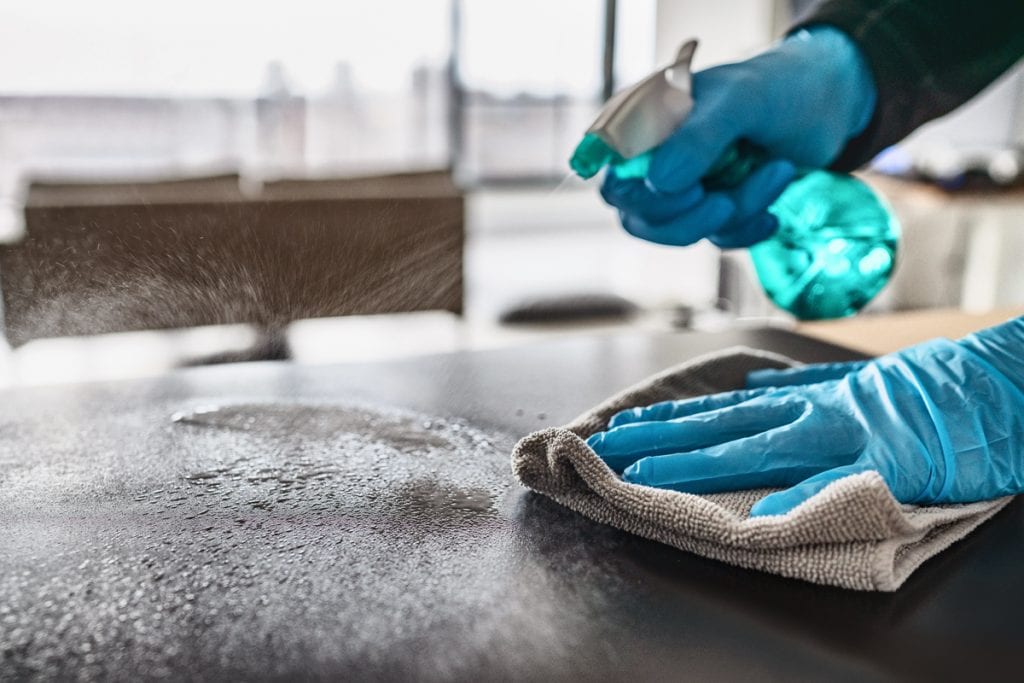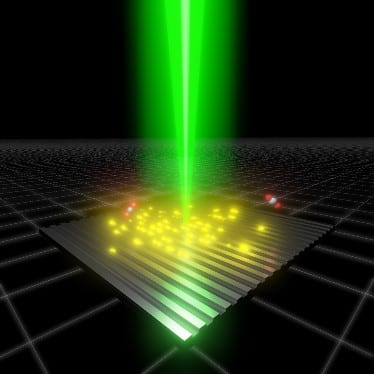
via INRS
Led by Professor Charles Gauthier from the Institut national de la recherche scientifique (INRS), the team characterized a new biosurfactant in a study published in Chemical Science, the Royal Society of Chemistry’s flagship journal. Surfactants are synthesized from petroleum and are the main active ingredient in most soaps, detergents, and shampoos. Biosurfactants, produced by bacteria, are safer and can replace synthetic surfactants.
Rhamnolipid molecules are some of the safest surfactants known and are particularly attractive, thanks to their biodegradability, minimal toxicity, and amenability to be produced from industrial waste. But there’s a problem. They are made using Pseudomonas aeruginosa, a pathogenic bacterium harmful to humans.
“If we want to fully gain the benefits of rhamnolipids, we need to grow these pathogenic bacteria on a huge scale. And because that’s a health risk, the industry is looking for alternatives.”
Charles Gauthier, specialist in chemistry of carbohydrates and natural products
The molecules produced by these bacteria are usually mixed with other compounds or virulence factors, making them trickier to use.
To address the problem, the research team identified molecules that resemble rhamnolipids in Pantoea ananatis, a non-pathogenic bacterium. The team was then able to chemically synthesize these molecules, called ananatosides, in the laboratory, raising the possibility that they could be produced on a larger scale than using bacteria. The industry is already showing interest in these promising new biosurfactants.
A look at the structure
The new molecule comes in two different forms, A and B. Ananatoside A structure is described as closed, while B is open. The molecule A is closed in on itself to form a loop. The process that closes the loop is called lactonization, and it has also been achieved with rhamnolipids to create new molecules.
The team has shown that the lactonized form has a large impact on the biological action of the molecules. It minimizes the surface-active properties of rhamnolipids and renders them toxic. Now the researchers want to characterize further new biosurfactants and make the molecules more stable.
Original Article: New, biological, and safer soaps
More from: Institut national de la recherche scientifique | Liverpool John Moores University
The Latest Updates from Bing News & Google News
Go deeper with Bing News on:
Biological soaps
- EastEnders slated by fans for ruining character with ‘worst ever storyline in 39 years’
FANS have accused EastEnders of ruining one character amid what they have labelled as the soap’s “worst ever storyline”. Viewers of the BBC show have not held back in regards to ...
- Beth Cordingly reveals romance with Emmerdale legend: ‘I am very in love’
In recent episodes of the ITV soap, Beth’s character Ruby has continued to cause a great deal of trouble for the Dingle family. After expressing her hatred towards Caleb’s biological relatives, Ruby’s ...
- Kelvin Fletcher ‘beaming with pride’ as daughter, 7 follows in his footsteps and makes acting debut in soap
EMMERDALE legend and Strictly Come Dancing champion Kelvin Fletcher was thrilled this week as his daughter made her TV acting debut. Kelvin played the role of Andy Sugden in the ITV soap for 20 ...
- Are Antibacterial Bar Soaps Really Better Than Regular Bar Soaps?
Everyone has preferences, and this includes which soap you reach for: be it a pump or bar. Even further, many believe that antibacterial soaps are the better pick than a traditional bar soap.
- EastEnders star Bobby Brazier's future on soap revealed
EastEnders star Bobby Brazier has reportedly renewed his contract on the BBC One soap. According to a report published in The Mirror, the actor has signed a new deal on the show after rumours were ...
Go deeper with Google Headlines on:
Biological soaps
[google_news title=”” keyword=”biological soaps” num_posts=”5″ blurb_length=”0″ show_thumb=”left”]
Go deeper with Bing News on:
Biosurfactants
- Disinfection of Manufacturing Environments: Balancing Efficacy and Cost of Cleaning with Safety and Environmental Impact (INTERPHEX 2024)
Wenyu Zhang, PhD, addressed new trends in the aseptic industry and the chief concerns companies should keep in mind while weighing their options, at INTERPHEX 2024.
- UNICEF Backs Young Innovators To Tackle The Climate Crisis
Two dozen promising solutions for adapting to or mitigating the effects of climate change — each one led by a young person — have been selected for acceleration.
Go deeper with Google Headlines on:
Biosurfactants
[google_news title=”” keyword=”biosurfactants ” num_posts=”5″ blurb_length=”0″ show_thumb=”left”]









